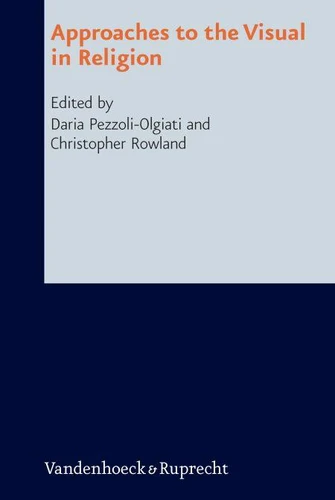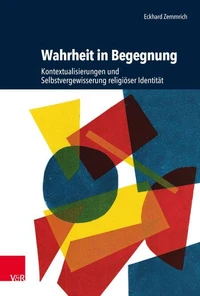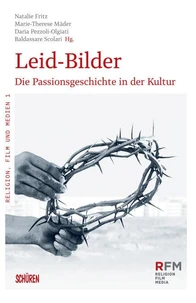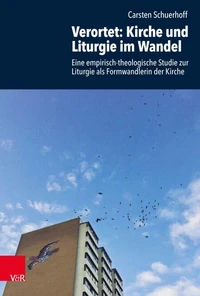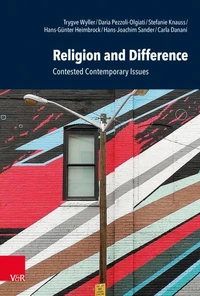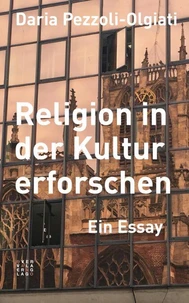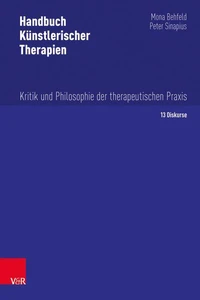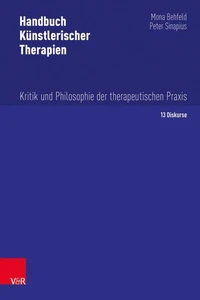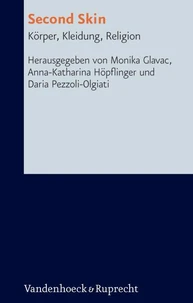Approaches to the Visual in Religion
Par : , , , ,Formats :
Disponible dans votre compte client Decitre ou Furet du Nord dès validation de votre commande. Le format PDF est :
- Compatible avec une lecture sur My Vivlio (smartphone, tablette, ordinateur)
- Compatible avec une lecture sur liseuses Vivlio
- Pour les liseuses autres que Vivlio, vous devez utiliser le logiciel Adobe Digital Edition. Non compatible avec la lecture sur les liseuses Kindle, Remarkable et Sony
 , qui est-ce ?
, qui est-ce ?Notre partenaire de plateforme de lecture numérique où vous retrouverez l'ensemble de vos ebooks gratuitement
Pour en savoir plus sur nos ebooks, consultez notre aide en ligne ici
- Nombre de pages268
- FormatPDF
- ISBN978-3-647-60442-8
- EAN9783647604428
- Date de parution16/06/2011
- Protection num.pas de protection
- Taille5 Mo
- Infos supplémentairespdf
- ÉditeurVandenhoeck & Ruprecht
Résumé
The authors of this volume investigate the analysis of visual sources and their indispensable role for understanding and interpreting religions, their symbol systems, and the wider traditions of which they are a part. A particular interest in this study is the focus on the methodological challenge of images from a comparative perspective. The common concern that ranges over all the contributions is the search for a methodological perspective where images may be analysed in a comprehensive way, with particular regard for the social, and wider intellectual settings, as well as the religious, in which the images are embedded.
Accordingly, we seek to show that visual sources need to be interpreted from different angles. In the last decades, a broad range of publications has contributed to highlight the significance of images, and visual media in general, for understanding religious traditions, communities and discourses in both historical and contemporary perspective. In more recent research streams, focussing on visual media in religious traditions and symbol systems, various avenues have opened up and been explored focussing on the status of images and of the gaze of the viewer as central aspects.
Furthermore, there are illuminating contributions dealing with the theoretical premises and settings with which to approach the visual as a central component of religion, on the one hand giving an overview of essential definitions and implications, on the other hand concentrating on specific techniques and/or media.
Accordingly, we seek to show that visual sources need to be interpreted from different angles. In the last decades, a broad range of publications has contributed to highlight the significance of images, and visual media in general, for understanding religious traditions, communities and discourses in both historical and contemporary perspective. In more recent research streams, focussing on visual media in religious traditions and symbol systems, various avenues have opened up and been explored focussing on the status of images and of the gaze of the viewer as central aspects.
Furthermore, there are illuminating contributions dealing with the theoretical premises and settings with which to approach the visual as a central component of religion, on the one hand giving an overview of essential definitions and implications, on the other hand concentrating on specific techniques and/or media.
The authors of this volume investigate the analysis of visual sources and their indispensable role for understanding and interpreting religions, their symbol systems, and the wider traditions of which they are a part. A particular interest in this study is the focus on the methodological challenge of images from a comparative perspective. The common concern that ranges over all the contributions is the search for a methodological perspective where images may be analysed in a comprehensive way, with particular regard for the social, and wider intellectual settings, as well as the religious, in which the images are embedded.
Accordingly, we seek to show that visual sources need to be interpreted from different angles. In the last decades, a broad range of publications has contributed to highlight the significance of images, and visual media in general, for understanding religious traditions, communities and discourses in both historical and contemporary perspective. In more recent research streams, focussing on visual media in religious traditions and symbol systems, various avenues have opened up and been explored focussing on the status of images and of the gaze of the viewer as central aspects.
Furthermore, there are illuminating contributions dealing with the theoretical premises and settings with which to approach the visual as a central component of religion, on the one hand giving an overview of essential definitions and implications, on the other hand concentrating on specific techniques and/or media.
Accordingly, we seek to show that visual sources need to be interpreted from different angles. In the last decades, a broad range of publications has contributed to highlight the significance of images, and visual media in general, for understanding religious traditions, communities and discourses in both historical and contemporary perspective. In more recent research streams, focussing on visual media in religious traditions and symbol systems, various avenues have opened up and been explored focussing on the status of images and of the gaze of the viewer as central aspects.
Furthermore, there are illuminating contributions dealing with the theoretical premises and settings with which to approach the visual as a central component of religion, on the one hand giving an overview of essential definitions and implications, on the other hand concentrating on specific techniques and/or media.

